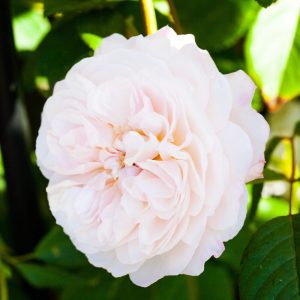Description
Hydrangea paniculata ‘Limelight’ is a deciduous shrub that boasts large, conical flower heads that bloom in mid-summer and gradually fade from green to shades of pink and burgundy as autumn approaches. The flowers are long-lasting and held on strong stems, making them excellent for cut arrangements. ‘Limelight’ can grow to be quite large and is often used as a specimen plant or in a mixed border. It is adaptable to a variety of soil types and thrives in full sun to partial shade. Pruning is best done in late winter or early spring.
Key Facts
- Common Name(s):paniculate hydrangea ‘Limelight’
- Hardiness:Fully hardy
- How big will I get? Hydrangea paniculata ‘Limelight’ can grow to a height of 1.7m and a spread of 2.3m.
- Did You Know That:Hydrangea paniculata is often called panicle hydrangea because of the shape of its flower clusters?
Plant Calendar
A rough guide to how this plant will change through the year.
| Jan | Feb | Mar | Apr | May | June | July | Aug | Sept | Oct | Nov | Dec | |
| Flowering Time |   |
  |
  |
  |
  |
|||||||
| Foliage Colour |  |
 |
 |
 |
 |
 |
 |
 |
 |
| J | F | M | A | M | J | J | A | S | O | N | D |
  |
  |
  |
  |
  |
|||||||
 |
 |
 |
 |
 |
 |
 |
 |
 |
Care Guide

Soil Requirements
Hydrangea paniculata ‘Limelight’ is a versatile plant and can cope with wet or drier soils, but prefers there to be decent drainage. This plant can grow in soil with a wide range of pH levels, it is not picky about the pH level of the soil.

Best Position
Hydrangea paniculata ‘Limelight’ can handle either an exposed or a sheltered position and can cope with either full sun or partial shade.

Maintenance
Hydrangea paniculata ‘Limelight’ is relatively simple to prune and this helps maintain its overall health and appearance. The best time to prune these deciduous shrubs is in late winter or early spring, before new growth begins. Start by removing any dead, damaged, or diseased branches, cutting them back to a healthy set of buds or to the base of the plant. Next, identify the oldest one-third of the stems and cut them back to ground level to encourage fresh, vigorous growth. For the remaining stems, trim them back to a point just above a healthy pair of buds, typically reducing their height by one-third to one-half. This will promote a more compact, bushy growth habit and encourage larger, showier blooms.

Pest, Diseases and Wildlife
Hydrangea paniculata ‘Limelight’ can have problems with aphids, scale insects and capsid bug, it can be vulnerable to certain diseases such as leaf spot and powdery mildews. It is considered to be toxic.







